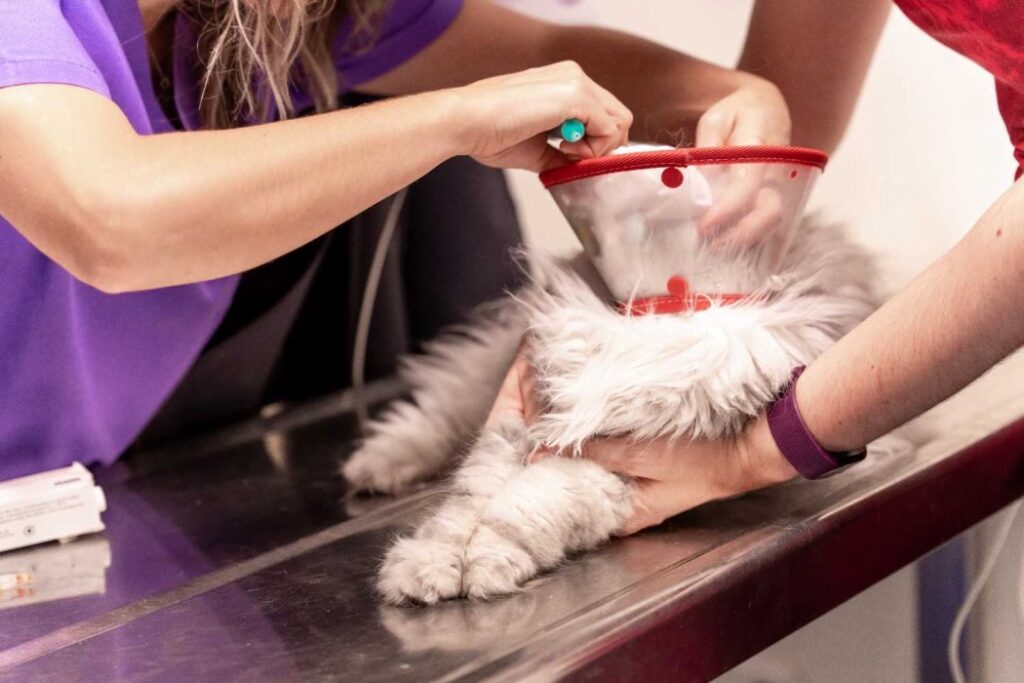Do you know what the crucial part of feline care is? Cat grooming. Grooming helps to maintain a healthy coat, skin, and general well-being. However, like with anything nice, there may be too much of it. Determining the delicate line between a well-groomed feline and a cat with too many spa days is critical for proper pet parenting.

Overgrooming Can Cause Bald Areas and Skin Discomfort
The state of a feline’s fur is one of the most apparent indicators of excessive pet grooming. While a well-groomed cat has a lustrous and silky coat, overgrooming can cause uneven hair, bald areas, and skin discomfort. Cats are naturally careful groomers, but this tendency might signal an underlying problem if it becomes obsessive.
Look Out for Scabs or Skin Ulcers
Overly spruced felines may show red or irritated skin, sometimes accompanied by scabs or ulcers. Excessive grooming in cats licking or biting at the hair can result in self-inflicted wounds. Therefore, cat owners should carefully check their pet’s skin during grooming sessions. If you observe indications of irritation, you should speak with a veterinarian to treat any potential health issues.
Watch Our Changed Behavioral Signs
Professional cat groomers say behavioral changes are another indicator of excessive grooming. Excessive grooming in felines can lead to increased anxiety, tension, and even lethargy. Behavioral changes might occur due to discomfort or pain caused by over-grooming. Therefore, parents must know their cat’s regular behavioral changes.
Discomfort Around Ears

Ears are another location where evidence of excessive pet grooming may appear. While cats brush their ears as part of their daily activity, persistent scratching or excessive ear cleaning may indicate a problem. Ear infections or mites may bother your feline buddy, leading them to over-groom this delicate area.
Cat’s Claws 101
Expert cat groomers say cats naturally utilize scratching posts and other surfaces to keep their claws under control. However, excessive grooming may include licking or biting at their claws, resulting in nail-related problems. If you see indications of suffering while grooming or changes in your cat’s nail condition, get expert help.
Signs of Dental Problems
Felines require proper dental hygiene and grooming, including oral care. While it is typical for kitties to keep their teeth clean, excessive drooling, difficulties eating, or a reluctance to groom the face may indicate dental problems. Dental issues can contribute significantly to excessive grooming in cats. Therefore, frequent veterinarian check-ups should include thoroughly inspecting your cat’s oral health.
Feline Fur Alert

Finally, while cat grooming is essential to feline care, pet owners must be aware of the indications of over-grooming. Regular grooming visits are an excellent way to examine your cat’s overall health, but any abnormal behavior or physical condition should be handled immediately. Seeking expert assistance from a veterinarian can help you identify the indications of excessive cat grooming and keep your feline buddy healthy. Remember, a well-groomed cat is happy, but moderation is essential for maintaining their purr-fection.

Mein Fokus als Webentwickler liegt auf responsivem Design.
Handbags: where practicality meets panache for women.